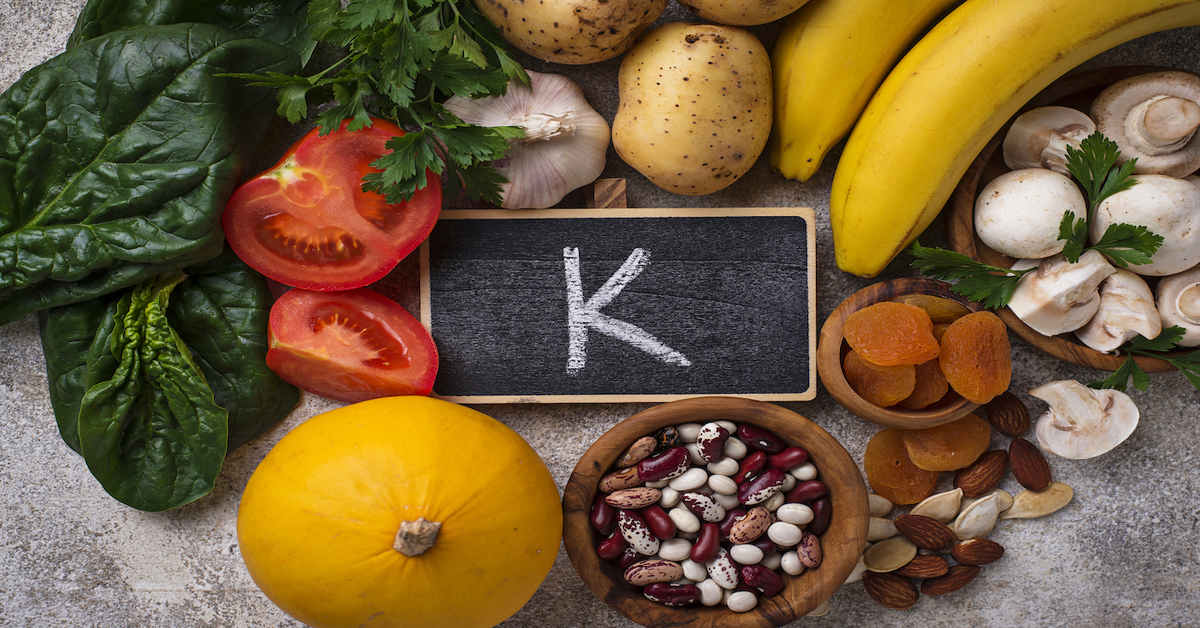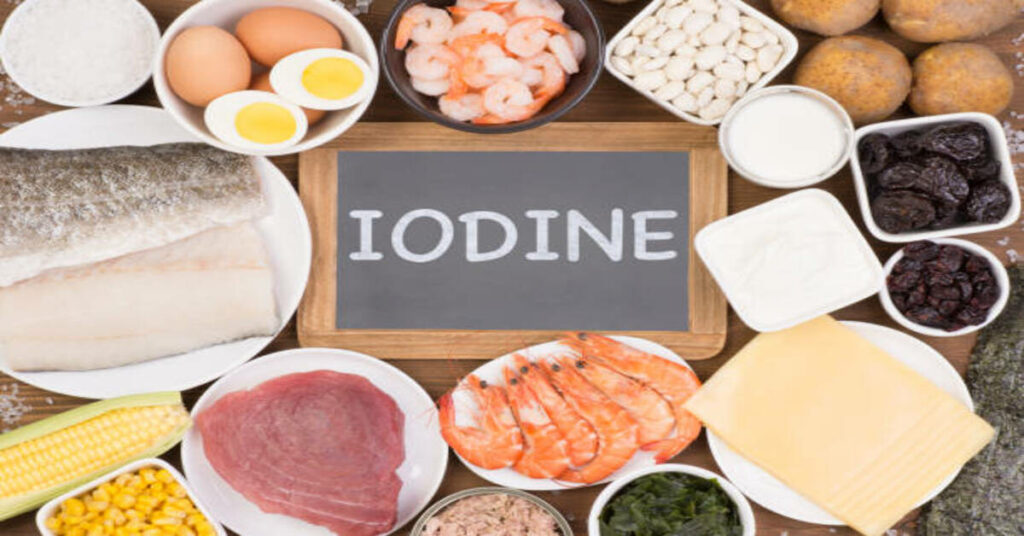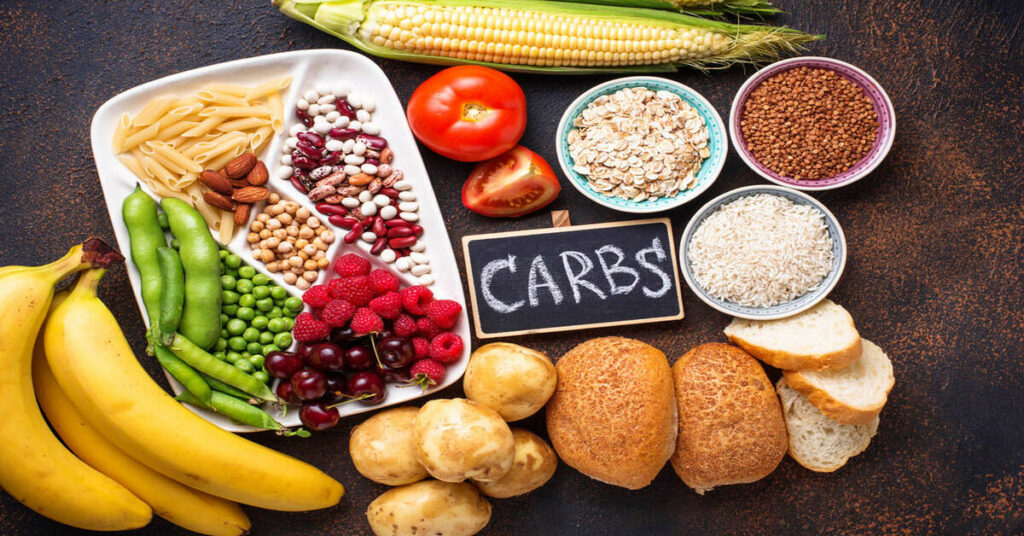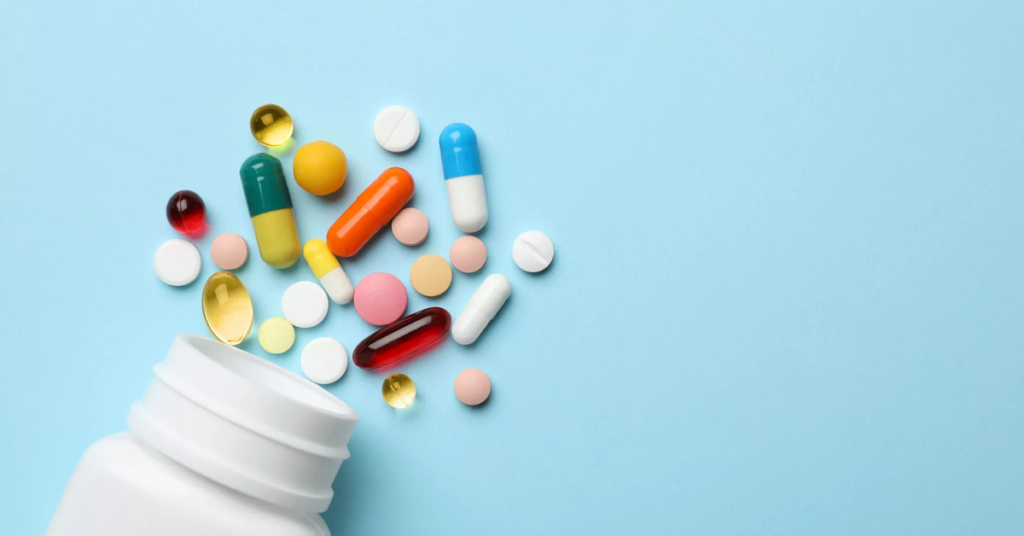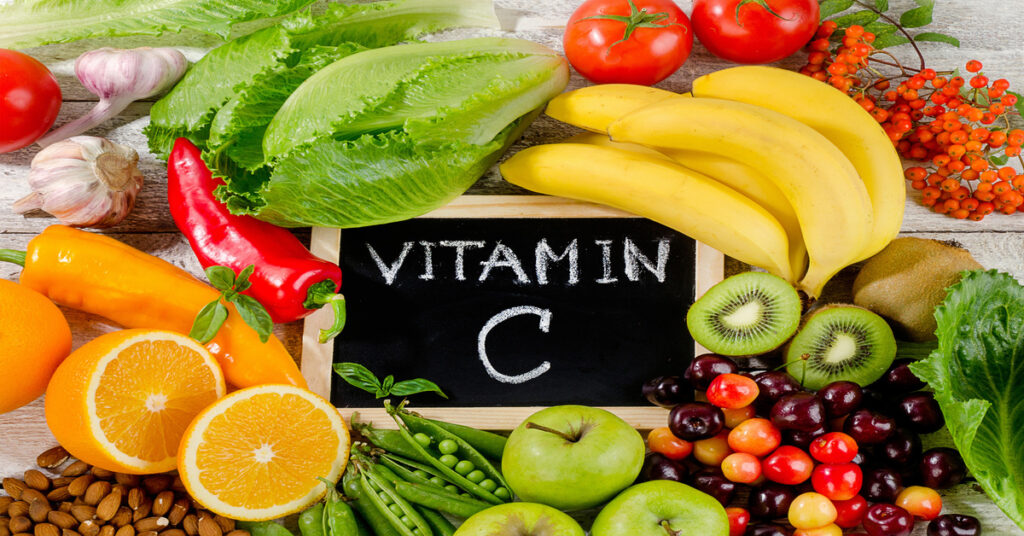VITAMIN K
Vitamins are essential for maintaining the proper functioning of our body. Vitamin K is one such nutrient that plays a crucial role in maintaining bone health and regulating blood clotting.
In this article, we will delve deeper into the benefits of Vitamin K on bone health and blood clotting regulation. We will explore how Vitamin K works in the body, the different forms of Vitamin K, and the dietary sources of Vitamin K. We will also discuss the latest research findings on the benefits of Vitamin K and its potential therapeutic applications.
Table of Contents
- Sources & Structure
- Deficiencies
- Supplemental Forms of Vitamin K
- Absorption
- Distribution
- Longevity
- Neuroprotection
- Neuroinflammation
- Cognition
- Multiple Sclerosis
- Memory & Learning
- Cardiovascular Health
- Interactions with Glucose Metabolism
- Fat Mass & Obesity
- Skeleton & Bone Metabolism
- Joint Health
- Inflammation & Immunology
- Interactions with Hormones
- Interactions with Organ Systems
- Interactions with Cancer Metabolism
- Interactions with Pregnancy
- Interactions with Disease States
- Nutrient Interactions
- Safety & Toxicology
- Summary
Sources & Structure
Vitamin K is a group of quinone compounds that can be divided into different forms, including vitamin K1 (the plant derived phylloquinone), vitamin K2 (also known as menaquinones or MK-x), and vitamin K3 (also called menadione). These different forms of vitamin K, also known as vitamers, can all have vitamin-like effects in the body. Phylloquinone, which is derived from plants, as well as menadione and the various menaquinones, are all considered vitamers of vitamin K.
Vitamin K was first discovered in 1929 during research on sterol metabolism. The vitamin was named after its coagulation properties and was discovered in Germany by Henrik Dam. Due to its coagulation properties, it was named Vitamin K after the German word “Koagulation” instead of “Coagulation”.
Vitamin K is commonly used in clinical settings to prevent hemorrhage, [1] while vitamin K antagonists such as dicoumarol or warfarin are used to prevent excessive blood clotting or to induce hemorrhage.
The primary form of Vitamin K found in the diet is Vitamin K1, which is also known as phylloquinone or Phytonadione. The name phylloquinone comes from the fact that it has a phytyl side chain similar to that of chlorophyll and a quinone structure.
Dark green vegetables and added fats, such as cooking oils, are the primary dietary sources of phylloquinone in the American diet. Similarly, in the Japanese diet, vegetables are believed to be the main source of phylloquinone.
Menaquinones exist in two forms: short-chain menaquinones synthesized in animals, and longer chain quinones synthesized by bacteria.
The extent to which dietary MK-4 contributes to overall vitamin K status is uncertain. While low dosages of MK-4 (420mcg) do not have a significant effect on circulating concentrations of MK-4, dietary intake of MK-4 is still associated with a reduced risk of cardiovascular disease.
MK-4 is primarily found in animal products, while MK-7, the most common form of longer chain menaquinone, is found in fermented foods. Natto is the most common source of MK-7.
It is important to note that dietary values may not necessarily correspond to serum values of Vitamin K, as there is a weak correlation, and sometimes no correlation at all. This is thought to be due to the unreliability of absorption, particularly since phylloquinone (the primary dietary source of Vitamin K from plants) is not well absorbed. [1]
The unreliability of absorption is also observed with isolated phylloquinone. This may be linked to serum triglyceride levels, which have a positive relationship with phylloquinone absorption. However, it does not seem that plasma Vitamin K is influenced by heredity or genetics. Rather, it is affected by various biological and environmental factors. [1]
The foods that contain the highest levels of vitamin K (phylloquinone unless otherwise specified) include:
- Avocado (1.0µg/100g)
- Bananas (0.1µg/100g)
- Apples (6.0µg/100g)
- Grapefruit (less than 0.1µg/100g)
- Mangoes (0.5µg/100g)
- Melon (yellow at 0.1µg/100g, water at 0.3µg/100g)
- Pineapple (0.2µg/100g)
- Grapes (8.0-9.0µg/100g) and raisins (4µg/100g)
- Cranberries (2.0µg/100g)
- Bilberries (4.0µg/100g)
- Plums (8.0µg/100g)
- Peaches (4.0µg/100g)
- Pears (6.0µg/100g)
- Tomatoes (6.0µg/100g)
- Strawberries (3.0µg/100g)
- Nectarines (3.0µg/100g)
- Matcha tea (3,049+/-145µg/100g)
- Green tea leaves (1,876+/-118µg/100g)
- Black tea leaves (1,036+/-91µg/100g) , tea itself has none since phylloquinone is fat soluble and not leeched out from the tea leaves into the steeped water (although this issue is circumvented with Matcha tea)
- Raw perilla (1,007+/-123µg/100g)
- Parlsey (548µg/100g)
- Seaweeds including dried Wakame (1,293+/-231µg/100g), dried Hijiki (175+/-38µg/100g), and dried Laver (413+/-78µg/100g)
- Cucumber (64+/-18µg/100g)
- Cabbage (Raw is 127+/-20µg/100g; boiled is 180+/-20µg/100g)
- Komatsuna (Raw is 319+/-64µg/100g; boiled is 425+/-107µg/100g)
- Carrots (6.0µg/100g)
- Hen egg yolk (64+/-31µg/100g)
- Beef chuck (15+/-7µg/100g)
- Pork (6+/-2µg/100g)
- Chicken thigh (27+/-15µg/100g)
Phylloquinone is predominantly present in dark green leafy vegetables, with some Japanese vegetables like green tea (Matcha being the most bioactive) and seaweeds having particularly high levels. Animal products contain MK-4, but the relevance of this to the human diet is uncertain due to the low levels present. MK-7 is found in several fermented foods, but it is most notably abundant in natto.
Cooking methods do not appear to damage phylloquinone. However, boiling natto has been found to destroy the bacteria and reduce serum MK-7 levels from the food.
Vitamin K vitamers can be classified into two main structural classes: phylloquinones (K1) and menaquinones (K2), where the “n” denotes the number of repeating units in the brackets. In addition to these, there are also other important structures, such as the menadione ring (K3) and menaquinones with three (MK-4) or six (MK-7) additional isoprenoid groups. [1, 2, 3]
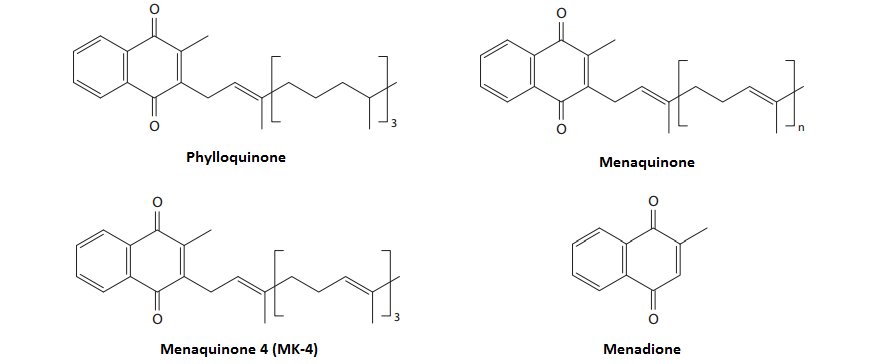
The Vitamin K cycle is responsible for converting phylloquinone into hydroquinone, and then into a vitamin K epoxide, which is essential for synthesizing γ-carboxyglutamate from glutamate. [1, 2, 3] This conversion is required to modify the function of specific enzymes that are known as ‘Vitamin K dependent’ enzymes, and mediate the effects of dietary or supplemental vitamin K.
Vitamin K is essential for the activity of various enzymes, [1, 2, 3, 4] and their functionality decreases when there is a lack of vitamin K. As the intake of dietary vitamin K increases, the activities of these enzymes also increase until they reach their maximum rate.
While the largest system influenced by vitamin K is the vitamin K cycle and its target proteins, there are some direct effects of vitamin K vitamers that do not require the vitamin K cycle.
The recommended dietary intake (RDI) of vitamin K is around 1mcg/kg, [1] but there is no consensus on this among different countries. [1, 2] Generally, a varied diet is sufficient to meet the RDI. However, the ideal intake of vitamin K is not yet determined. In some instances, there are advantages to consuming more than the RDI.
Main Takeaway: Vitamin K is a group of molecules that share a similar structure and play an important role in blood clotting. These molecules are primarily derived from either plant sources (known as phylloquinone) or bacterial sources (known as menaquinone).
Despite dietary intake being the primary determinant of Vitamin K status, it is not a reliable predictor. There is significant variability between Vitamin K intake and Vitamin K status in the body, and the reasons for this variability, while speculated to involve various mechanisms, remain unknown.
Phylloquinone is predominantly present in dark green leafy vegetables, with some Japanese vegetables like green tea (Matcha being the most bioactive) and seaweeds having particularly high levels. Animal products contain MK-4, but the relevance of this to the human diet is uncertain due to the low levels present. MK-7 is found in several fermented foods, but it is most notably abundant in natto.
Cooking methods do not appear to damage phylloquinone.
The recommended dietary intake (RDI) of vitamin K is around 1mcg/kg, but there is no consensus on this among different countries. Generally, a varied diet is sufficient to meet the RDI. However, the ideal intake of vitamin K is not yet determined. In some instances, there are advantages to consuming more than the RDI.
Deficiencies
As vitamin K is an essential vitamin, it does have deficiency states and the body attempts to regulate its levels (urinary excretion of vitamin K metabolite are reduced during dietary restriction and increased during repletion).
Severe deficiencies of Vitamin K are known to lead to muscular and subcutaneous hemhorrhages and is known to cause bleeding disorders in infancy (called either ‘Vitamin K Deficiency Bleeding’ or simply VKDB) that are treatable with Vitamin K supplementation. [1] Vitamin K deficiencies are also associated with reduced locomotion in rats (lethargy).
Even when meeting the recommended daily intake of vitamin K, subclinical deficiencies are prevalent in society, which refer to a reduction in carboxylated vitamin K dependent proteins without causing apparent symptoms of deficiency. [1] Studies indicate that this can increase the risk of cardiovascular disease [1, 2] and fractures [1, 2, 3, 4, 5, 6, 7] due to tissue calcification.
Reduced vitamin K levels result in a decrease in the carboxylation rate of proteins, leading to the formation of uncarboxylated proteins that can be measured in the blood. The percentage of certain uncarboxylated proteins (typically osteocalcin) can serve as an indicator of vitamin K status. [1, 2]
Main Takeaway: True deficiencies of Vitamin K manifest themselves mostly as excessive bleeding disorders.
Supplemental Forms of Vitamin K
Vitamin K1 (phylloquinone) or one of the two vitamin K2 variants (MK-4 or MK-7) are the most common vitamin K supplements to be used. Vitamin K3 (menadione) is not commonly used.
Although MK-4 (Menatetrenone) is active in carboxylating proteins, it does not appear to increase the amount of active vitamin K in the body. [1, 2] Higher doses of MK-4 are required compared to phylloquinone, and although a pharmacological dose of 45mg is used, it is possible that 1,500mcg is also effective. [1, 2, 3] Additionally, MK-4 may have a unique role in inducing bone growth that is not observed with phylloquinone or MK-7. [1]
MK-7 shares similarities with MK-4 as it **does not increase phylloquinone levels**, [1, 2] yet it can aid the Vitamin K cycle and improve vitamin status. While MK-4 requires higher dosages, MK-7 can be obtained by modifying the diet, primarily through natto consumption. Moreover, MK-7 is generally considered more bioactive than MK-4 based on weight.
Menadione seems to act as a precursor for MK-4 [1, 2] and can enhance the body’s vitamin K status without affecting phylloquinone levels. However, Menadione is not widely used as a supplement due to its unfavorable toxicity profile compared to other vitamin K vitamers.
Absorption
The absorption of vitamin K occurs through the formation of micelles, [1, 2] which is the typical absorption process for fat-soluble vitamins. Therefore, it is important to consume dietary fats along with vitamin K to enhance its absorption.
MK-4 has moderate absorption, while MK-7 is absorbed better. Phylloquinone, on the other hand, is inherently well absorbed, but its bioavailability may be reduced when consumed through plants. After being absorbed from the intestines in the form of chylomicrons, vitamin K is believed to undergo hepatic uptake and then be repackaged into lipoproteins for continual transport throughout the body.
Distribution
Vitamin K is distributed in the body through lipoproteins, [1] which is consistent with its absorption through chylomicrons. The longer chain menaquinones tend to be carried by LDL, while phylloquinone and others are transported in the triglyceride-rich fraction. [1]
Vitamin K has been found to accumulate in different tissues after being ingested orally. Compared to other fat-soluble vitamins, it has a relatively short half-life in the body and is excreted more quickly.
Phylloquinone is the primary form of vitamin K in the blood, and compared to it, MK-4 has a shorter half-life, while MK-7 and other longer chain menaquinones have a longer half-life and higher bioactivity. [1]
Due to vitamin K being taken up in part by the LDL receptor, the forms of vitamin K that are localized to the LDL portion of lipoproteins are thought to (and have some evidence) for better cellular uptake. This implicates longer chain menaquinones in being better than phylloquinone
The microorganisms in the colon can convert phylloquinone into menaquinones with different chain lengths, but this conversion is not considered significant for overall vitamin K status in the body due to the limited absorption of vitamin K from the colon into circulation. Phylloquinone may be converted into MK-4 in the body after absorption, not associated with colonic microflora.
Topical application of vitamin K in creams can lead to absorption through the skin, but it is more effectively absorbed through nanodispersion capsules or with a fatty acid-based delivery system such as monoolein. While phylloquinone has been tested, menaquinones have not yet been studied, despite their potential for better absorption due to increased fat solubility.
Longevity
Vitamin K, especially the menaquinones, has been found to have a protective effect on mitochondrial ATP production when the mitochondria is exposed to factors that decrease ATP production. However, the exact mechanisms responsible for this effect are not yet understood.
Vitamin K has been observed to preserve the phenotype of a genetic defect in drosophila that is associated with longevity and aging. However, the implications for oral supplementation in humans are not currently known.
Neuroprotection
Vitamin K has been found to provide protection against oxidative stress induced by glutathione depletion and glutamate, although its effectiveness against other forms of oxidative stress is not clear. Studies have shown that MK-4 is more potent than phylloquinone in protecting against oxidative stress, and it has been observed that MK-4 can bioaccumulate in tissues where it is needed for protection.
Protein S and Gas6 are two proteins that have similar structures and act through the TAM family of receptors. They have been shown to protect neurons and other brain cells from apoptosis. [1]
Vitamin K has been shown to promote neuronal growth, possibly through both Gas6 and Protein S as well as independent mechanisms that may involve sphingolipid metabolism.
Neuroinflammation
Vitamin K has been shown to have anti-inflammatory properties [1, 2] and can inhibit the activation of the 12-lipoxygenase (12-LOX) enzyme.
Cognition
There is evidence suggesting that vitamin K status is negatively associated with cognitive health in older individuals, although there are currently no interventions to address this. At least in rats a lifetime dietary restriction of vitamin K to low levels is associated with cognitive impairment upon aging. Considering the neuroprotective effects of vitamin K, it is possible that vitamin K may help reduce the risk of cognitive aging-related diseases.
Multiple Sclerosis
Vitamin K has been found to interact with myelin in several ways. For example, it supports the production of sulfatide, which is a component of myelin, and the vitamin K-dependent protein Gas6 has been linked to myelination.
Memory & Learning
Vitamin K may play a role in memory, particularly during aging, as a result of the protective effects of two vitamin K-dependent proteins (Gas6 and protein S) and animal studies demonstrating that higher brain levels of MK-4 were associated with increased myelin sulfitides in the hippocampus and cortex of aged rats, but not in young rats. These findings are believed to be related to the aforementioned proteins because the aging process is associated with a decline in Gas6. Additionally, dietary phylloquinone intake over a lifetime has been shown to enhance cognitive function in aged rats, but not in young rats, despite having no cognitive-enhancing effect in young rats.
Among elderly individuals between the ages of 70 and 85 without cognitive disease, a study found a positive correlation between serum phylloquinone levels and improved memory performance, including verbal episodic memory, 20-minute verbal recall, and both free and cued recall tasks. However, there was no significant association between phylloquinone and executive functions or processing speed.
Cardiovascular Health
Vitamin K can be found in the cardiac tissue, where it is involved in various biological processes. Gas6, a vitamin K-dependent protein, is also present in the cardiac tissue and is known to regulate cell division and growth in this tissue.
Although vitamin K injections have been found to have anti-arrhythmic properties, this effect is not relevant to oral supplementation as a very high concentration of vitamin K would be required.
Vitamin K is primarily recognized for its role in facilitating proper blood clotting (coagulation), [1] as a group of proteins that play a crucial role in mediating blood clotting require vitamin K for their activity. During vitamin K deficiency, these proteins can malfunction. [1]
Arterial calcification is characterized by the accumulation of calcium in the arterial walls, which can lead to increased arterial stiffness and is considered a significant independent risk factor for various health problems. [1, 2, 3]
The vitamin K-dependent protein matrix Gla protein (MGP) is a crucial component of a network of proteins that inhibit arterial calcification by removing calcium from arterial walls, thus reducing the risk of arterial stiffness and all-cause mortality. MGP is considered the most important vitamin K-dependent protein involved in this process, although osteocalcin also plays a role. [1]
Interactions with Glucose Metabolism
There is some evidence to suggest that vitamin K may reduce postprandial insulin spikes in individuals who are relatively deficient in the vitamin. However, it is important to note that this effect does not appear to be a direct result of vitamin K supplementation based on the limited available evidence.
An individual’s sensitivity to insulin appears to be positively associated with higher levels of total osteocalcin and a higher rate of carboxylation, [1, 2, 3, 4, 5] which suggests a better vitamin K status. However, there are no interventions at present to assess the effects of vitamin K supplementation on insulin sensitivity.
The previously mentioned improvement in insulin sensitivity may be regulated by either enhancing adiponectin activity in the body or promoting pancreatic beta-cell function.
Acute administration of high doses of MK-4 has been shown to increase insulin sensitivity associated with osteocalcin, but not adiponectin.
Fat Mass & Obesity
Although not a direct effect of vitamin K, one of the major vitamin K-dependent proteins, osteocalcin, has been found to have anti-obesity properties by stimulating the secretion of adiponectin in fat cells. Osteocalcin is believed to connect bone metabolism with fat metabolism.
Skeleton & Bone Metabolism
Phylloquinone and menaquinones have been found to enhance osteoblast differentiation and increase bone mineralization rates. These effects are not solely dependent on the vitamin K cycle, although the increased bone mineralization rate with menaquinones partially relies on osteocalcin and the vitamin K cycle.
Vitamin K has the potential to inhibit the actions of vitamin D in osteoclasts, which could lead to increased bone growth as osteoclasts are involved in reducing bone mass. However, it should be noted that this effect may require high doses of MK-4 that are not typically achieved through dietary intake.
Osteocalcin is a protein that undergoes carboxylation by enzymes that are dependent on Vitamin K. In cases of Vitamin K deficiency, the activity of this protein is diminished. While osteocalcin is known to inhibit excessive bone growth during youth, it seems to play a role in bone remodeling during the aging process.
The extent of carboxylation of osteocalcin is a marker of bone vitamin K status, and maximal carboxylation (indicative of optimal bone benefits) may occur at a phylloquinone intake of 1,000 mcg.
There is limited evidence suggesting that practical dosages of MK-4 at around 1,500mcg can help maintain bone mineral density in older individuals over time. However, for pharmacological superdoses of 45mg, there is more evidence suggesting their effectiveness. [1, 2, 3]
Vitamin K, specifically the menaquinones, is being researched for its potential benefits in post-surgery bone health. [1]
Although the benefits of vitamin K on bone mineral density may not be reliable, there are other benefits to bone width and overall mineral content that can occur independently of density changes. The reduced risk of fractures also appears to be a more reliable benefit than changes in BMD. [1, 2]
Research using high-dose vitamin K supplementation has shown a significant reduction in fracture risk by 50%. [1]
Joint Health
There is evidence to suggest that insufficient dietary intake of phylloquinone, low vitamin K status or or subclinical vitamin K deficiency are linked to an increased risk of developing knee osteoarthritis in one or both knees.
This is possible related to MGP (a vitamin K dependent protein) having roles in cartilage maturation and calcification.
Inflammation & Immunology
There is a possibility that increased levels of vitamin K can suppress the secretion of IL-6 from inflammatory stressors, but the mechanisms behind this phenomenon are not yet understood.
Menadione (Vitamin K3) has been noted to inhibit NF-kB translocation induced by TNF-α at 50µM, which was not replicated with phylloquinone or MK-4.
Interactions with Hormones
Sex hormone-binding globulin (SHBG) is a protein that can bind to sex hormones, such as testosterone and estrogen, thereby reducing their bioactivity. Higher levels of SHBG in the body are linked to decreased hormonal effects, while lower levels of SHBG are associated with increased hormonal effects.
Gas6 is a protein that depends on vitamin K and is known to interact with TAM family receptors. It is believed that Gas6 does this mainly through its laminin G-like domain, which is structurally similar to the binding site of SHBG. [1]
MK-4 has been found to increase testosterone in rats (human equivalent dose of 12mg/kg) whereas phylloquinone was ineffective.
It has been noted that testosterone acting upon its receptor is able to induce activity of Gas6, a vitamin K dependent protein, which is thought to mediate the interactions of testosterone on reducing arterial calcification.
Although the mechanism behind how vitamin K influences cortisol is not fully understood, studies have shown that supplemental vitamin K may protect against bone loss induced by pharmaceutical glucocorticoid usage.
Interactions with Organ Systems
Vitamin K has been found to accumulate in the liver and is known to be the organ that accumulates the most dietary vitamin K. A standard diet sufficient in vitamin K results in a tissue concentration of 32.4+/-3.3pmol/g in the liver, which decreases to less than 2pmol/g during dietary restriction (absolute deprivation for 9 days). Supplementation with phylloquinone has been shown to increase hepatic concentrations of MK-4.
Upon stimulation with cholecystokinin-8 or secretin, the pancreas secretes MK-4, phospholipase, and calveolin-1. Although the function of MK-4 in the pancreas is not entirely clear, current research suggests that it is unrelated to the vitamin K cycle. This hypothesis is based on the observation that pancreatic proteins do not exhibit significant staining for glutamate residues.
In rats, oral supplementation of 75mg/kg of MK-4 for 5 weeks has been shown to increase testicular concentrations of MK-4 to 525% of baseline (995.9pmol/g).
Interactions with Cancer Metabolism
There is evidence to suggest that menadione may have anti-cancer properties, [1, 2, 3] indicating that the structural backbone of vitamin K molecules may play a role in this effect, rather than the side-chain found in more commonly studied forms of the vitamin.
Gas6, as well as Protein S which shares the same receptors, may have anti-proliferative properties and potentially provide some anti-cancer benefits. [1] However, the practical implications of this regarding vitamin K supplementation are currently unclear.
Antiproliferative effects [1] have been observed with vitamin K in liver tumors, and MK-4 has been found to be more potent [1] than other forms of vitamin K in this regard.
Supplementing with pharmacological high doses of MK-4 (45mg) has been shown to decrease the likelihood of liver tumor recurrence post-surgery, as well as prolong survival in this population.
Interactions with Pregnancy
Although there is no direct research on the topic, it is believed that vitamin K may play a role in the development of children. [1] It is recommended that vitamin K be consumed in standard dietary amounts during this time, as there is a placental barrier that may prevent the supplementation of vitamin K from having any beneficial or negative effects on the neonate. [1]
Breast milk has lower concentrations of vitamin K compared to infant formulas. However, maternal supplementation of vitamin K can increase vitamin K levels in breast milk. Although this could potentially lower the risk of vitamin K deficiency bleeding in infants during the first 6 months of life (which is more common in breastfed infants), there are currently no studies investigating this.
Interactions with Disease States
Individuals with cystic fibrosis (CF) have a higher risk of vitamin K deficiency compared to the general population, as a result of increased fat malabsorption. Other fat-soluble vitamins such as vitamin E, vitamin D, and vitamin A are also occasionally deficient in CF patients. [1] Based on recent meta-analyses, the current evidence is not strong and may be subject to potential bias.
Nutrient Interactions
The interaction between vitamin C and menadione in cell cultures is synergistic. [1, 2, 3] However, it is not currently known how this information translates to the practical use of other forms of vitamin K in oral supplementation.
Vitamin D and Vitamin K are known to interact and work together in the function of some vitamin K dependent enzymes. Furthermore, vitamin K has been observed to enhance the beneficial effects of vitamin D on osteoblasts, [1] while higher doses of MK-4 can inhibit the negative impact of vitamin D on osteoclast formation.
In studies that compare a vitamin K only group against a vitamin K group also given vitamin D, the combination therapy groups tend to experience greater benefits to bone health as assessed by bone mineral density. [1]
There is a proposed relationship between Vitamin D toxicity and Vitamin K imbalance, as Vitamin D can increase matrix Gla protein (MGP) levels while Vitamin K activates it through carboxylation. If MGP remains uncarboxylated, it may contribute to arterial calcification.
The similarity in phenotype between Vitamin D toxicity and Vitamin K deficiency, along with the observation that Warfarin can enhance the toxicity of Vitamin D and has a comparable toxicity profile, supports the hypothesis that an imbalance between Vitamin D and Vitamin K can lead to toxicity. Moreover, both Vitamin D and Warfarin toxicity can be prevented by the same drug (ibandronate). [1]
A study involving supplementation of high doses of vitamin E (1000 IU) daily for 12 weeks showed an increase in circulating levels of PIVKA-II, which suggests a reduction in coagulant effects of vitamin K. However, this supplementation did not have any effect on plasma phylloquinone levels or the carboxylation state of proteins.
Sesamin is a lignan compound from sesame seeds, that has been found to inhibit vitamin E metabolism, which helps to maintain vitamin E concentrations in the body. While there is some evidence to suggest that sesamin may have a similar effect on vitamin K, there is not as much research available on this topic.
Low doses of phylloquinone can be useful in certain situations where patients are unstable and not reliably responding to anticoagulants that work by inhibiting vitamin K utilization, despite appropriate increases in the anticoagulant dosage. While supplemental vitamin K is generally considered antagonistic to such anticoagulants, this can be adverse (if impairing the anticoagulatory effect) or beneficial (preventing excessive blood thinning) [1] depending on context.
Safety & Toxicology
Menadione (Vitamin K3) appears to be toxic when injected into rats at 25mg/kg or more, causing kidney and cardiovascular degeneration.
It is possible to induce toxicity and possibly death [1, 2, 3, 4, 5] with injections of vitamin K, but this likely does not apply to oral supplementation in the standard dosage range.
Injections of menadione at fairly low concentrations have been found to be lethal to research animals. [1]
Reducing the expression of the NQO2 gene has been found to decrease menadione toxicity and lower the cellular accumulation of NADPH and NAD while the ablation of NQO1 has the opposite effect, increasing menadione toxicity. NQO1 is an enzyme that metabolizes quinone structures, including menadione, which is converted into menadiol and has both antioxidant and prooxidant properties. [1] Glutathione also plays a role in this process, as it can act on menadione to create semiquinone metabolites (prooxidants) and the superoxide radical [1, 2, 3, 4, 5] which can cause mitochondrial dysfunction by increasing calcium cycling excessively.
Main Takeaway: When cellular systems have excessive concentrations of menadione, antioxidative enzymes (especially glutathione) convert it into free radicals which can lead to oxidative stress.
Summary
Tldr; Vitamin K is a group of molecules that share a similar structure and play an important role in blood clotting. These molecules are primarily derived from either plant sources (known as phylloquinone) or bacterial sources (known as menaquinone).
Despite dietary intake being the primary determinant of Vitamin K status, it is not a reliable predictor. There is significant variability between Vitamin K intake and Vitamin K status in the body, and the reasons for this variability, while speculated to involve various mechanisms, remain unknown.
Phylloquinone is predominantly present in dark green leafy vegetables, with some Japanese vegetables like green tea (Matcha being the most bioactive) and seaweeds having particularly high levels. Animal products contain MK-4, but the relevance of this to the human diet is uncertain due to the low levels present. MK-7 is found in several fermented foods, but it is most notably abundant in natto.
Cooking methods do not appear to damage phylloquinone.
Vitamin K is a group of molecules that share a similar structure and play an important role in blood clotting. These molecules are primarily derived from either plant sources (known as phylloquinone) or bacterial sources (known as menaquinone).
Despite dietary intake being the primary determinant of Vitamin K status, it is not a reliable predictor. There is significant variability between Vitamin K intake and Vitamin K status in the body, and the reasons for this variability, while speculated to involve various mechanisms, remain unknown.
Phylloquinone is predominantly present in dark green leafy vegetables, with some Japanese vegetables like green tea (Matcha being the most bioactive) and seaweeds having particularly high levels. Animal products contain MK-4, but the relevance of this to the human diet is uncertain due to the low levels present. MK-7 is found in several fermented foods, but it is most notably abundant in natto.
Cooking methods do not appear to damage phylloquinone.
The recommended dietary intake (RDI) of vitamin K is around 1mcg/kg, but there is no consensus on this among different countries. Generally, a varied diet is sufficient to meet the RDI. However, the ideal intake of vitamin K is not yet determined. In some instances, there are advantages to consuming more than the RDI.
True deficiencies of Vitamin K manifest themselves mostly as excessive bleeding disorders.
Vitamin K has been shown to promote neuronal growth, possibly through both Gas6 and Protein S as well as independent mechanisms that may involve sphingolipid metabolism.
Vitamin K has been shown to have anti-inflammatory properties and can inhibit the activation of the 12-lipoxygenase (12-LOX) enzyme.
Among elderly individuals between the ages of 70 and 85 without cognitive disease, there appears to be a positive correlation between serum phylloquinone levels and improved memory performance, including verbal episodic memory, 20-minute verbal recall, and both free and cued recall tasks.
When cellular systems have excessive concentrations of menadione, antioxidative enzymes (especially glutathione) convert it into free radicals which can lead to oxidative stress.

